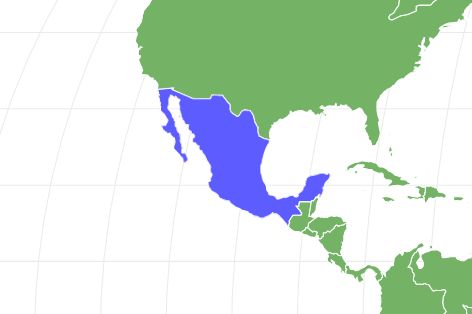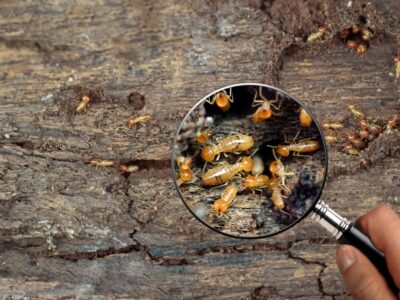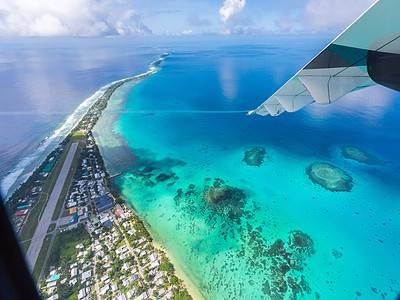Red Knee Tarantula
Brachypelma smithi
Inhabits the Pacific Mountains of Mexico!
Advertisement
Red Knee Tarantula Scientific Classification
- Kingdom
- Animalia
- Phylum
- Arthropoda
- Class
- Arachnida
- Order
- Araneae
- Family
- Theraphosidae
- Genus
- Brachypelma
- Scientific Name
- Brachypelma smithi
Read our Complete Guide to Classification of Animals.
Red Knee Tarantula Conservation Status
Red Knee Tarantula Facts
View all of the Red Knee Tarantula images!

The Red knee tarantula is a desert-dwelling spider.
Instead of spinning a web, these spiders dig burrows and spend most of their lives underground. They have a long lifespan compared to other spiders. Males can live up to ten years whereas females can potentially reach 30 years old. They are carnivores eating a diet of crickets, grasshoppers, roaches, lizards, frogs, and sometimes small mice.
See all of our expert product reviews.
5 Incredible Red Knee Tarantula Facts!

Mexican Red Knee Tarantula isolated on a white background.
©Pixel Memoirs/Shutterstock.com
- This spider is one of over 1,000 species of tarantula.
- These tarantulas hide in their burrow waiting to grab an insect or rodent passing by.
- The eight eyes on the head of this spider allow it to see what’s in front of it and behind it!
- A female red knee tarantula can lay from 200 to 400 eggs at a time.
- There are two claws on the end of each leg that allow this spider to climb a slick surface.
Species, Types, and Scientific Name
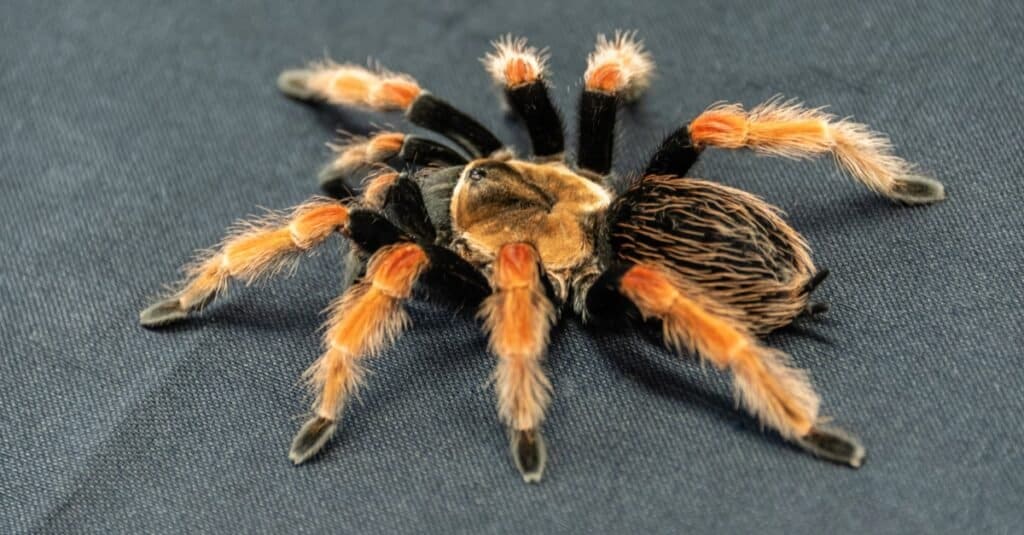
The scientific name of the red knee tarantula is
Brachypelma smithi
.
©James McKay/Shutterstock.com
Health and Entertainment for your Red Knee Tarantula
See all of our expert product reviews.
The scientific name of the red knee tarantula is Brachypelma smithi. The Greek word Brachypelma means short (brachys) sole/foot (pelma). The word smithi relates to this particular species of tarantula. Red knee tarantulas, also called the Mexican red knee tarantula, belong to the Theraphosidae family and the order Araneae.
There are 1,010 species of tarantula. Tarantulas are different from other types of spiders in that they always have hair on their body and legs. Also, while most spiders have six spinnerets for spinning webs, some types of tarantulas have four spinnerets while others have two. Furthermore, a tarantula’s feet have glands in them that produce silk while spiders have these glands in their abdomen.
The red knee tarantula belongs to the genus Brachypelma. Some of the other tarantulas that belong to this genus include:
- Brachypelma auratum
- Brachyplema albiceps
- Brachyplema andrewi
- Brachyplema aureoceps
- Brachyplema baumgarteni
- Brachyplema boehemi
- Brachyplema emilia
- Brachyplema fossorium
- Brachyplema hamorii
- Brachyplema klaasi
- Brachyplema smithi
Evolution and Origin
Tarantulas first appeared in the Americas about 120 million years ago. The spiders that were ancestors to the African tarantulas appeared close to 112 million to 108 million years ago. However, by the 108 million year mark, taranatulas emerged from what is now known as India.
The first known tarantulas were ancient and first appeared in the Americas as mentioned above. However, at the time, South America would have been connected to Africa, India, and Australia as part of the Gondwana supercontinent.
With that said, spiders are an extremely ancient species.
Appearance

Red knee tarantulas are five to six inches long and weigh an average of 0.5 ounces.
©Vladimira Pufflerova/Shutterstock.com
The red knee tarantula has a large abdomen featuring dark brown hairs. Its cephalothorax features dark brown and cream-colored hairs. This spider has bright red or orangish hairs on each of its knee joints. This coloration earned this spider its name.
The colorful hairs on this spider’s legs are designed to sense vibrations in the ground. The vibrations help these spiders to safely navigate their environment. They also have palps that help them to taste and smell things.
Baby red knee tarantulas or spiderlings don’t have the full coloration of an adult. Their body doesn’t start to take on the dark brown and red/orange color pattern until they are several months old.
In terms of size, red knee tarantulas are five to six inches long and weigh an average of 0.5 ounces. The largest diameter of this spider is 10 inches.
Compare this to another tarantula called the Goliath bird-eating tarantula. The Goliath bird-eating tarantula has a leg span measuring 11 inches in diameter. Not surprisingly, it’s called the Goliath tarantula due to its size!
Normally, a red knee tarantula takes cover in its burrow if it feels threatened by a predator. Sometimes it stands up on its back legs to reveal its fangs to scare the threat away. One of the most interesting facts about this spider is it has barbed hairs on the underside of its abdomen.
It can shoot these barbed hairs at predators to defend itself. These hairs can lodge in a predator’s body causing itching and irritation. If they land in a predator’s eyes they can cause temporary blindness.
This tarantula leads a solitary life except during the breeding season.
Habitat

Red knee tarantulas can be found in Mexico, Panama, and the southwestern part of the United States.
©Tye Tygon Filmworks/Shutterstock.com
Red knee tarantulas can be found in Mexico, Panama, and the southwestern part of the United States. They live in a desert habitat as well as in scrublands and dry forests. In a desert, this spider may dig a burrow at the base of a cactus!
Red knee tarantulas have a shy temperament and look for hiding places. A wild red knee tarantula may find its way into a shed or garage and make a home between a stack of old boxes or behind a dusty collection of brooms, shovels, etc. Otherwise, if a red knee tarantula is in a house, it’s usually a pet!
Diet

Red Knee Tarantula
©User: Fir0002, CC BY-SA 3.0, via Wikimedia Commons – License
Red knee tarantulas are carnivores. One of the most notable facts about these spiders is they usually let their food come to them. This spider hides in its burrow and waits for a lizard, cricket, or other prey to enter the area. When the animal gets close enough, the tarantula grabs it and gives it a venomous bite. Once their prey is paralyzed, the venom liquifies the insides of the animal. The spider consumes the liquified insides of its prey.
What eats the red knee tarantula?
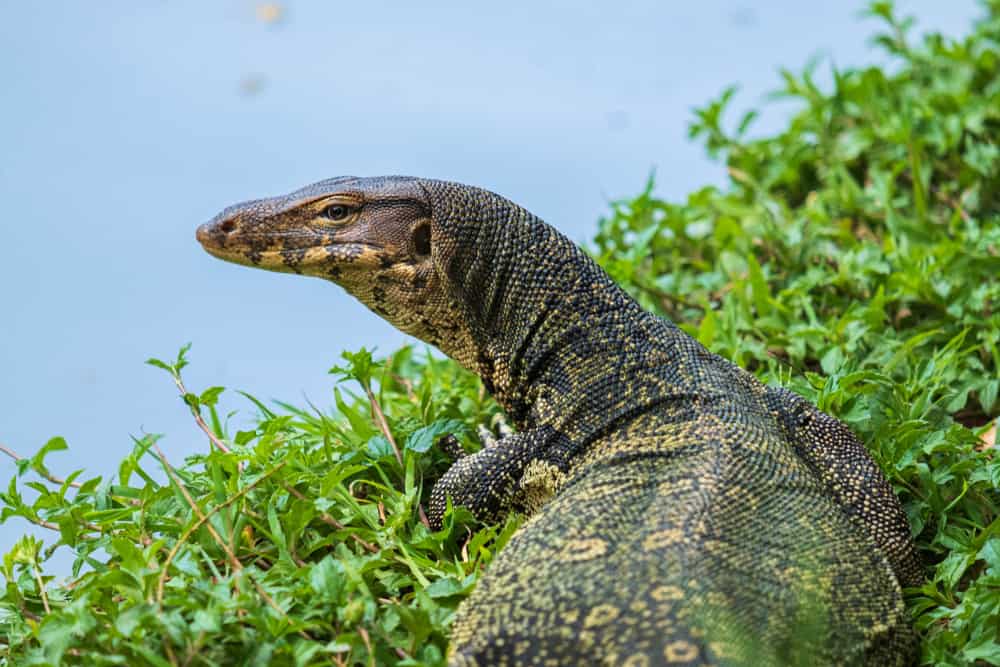
Predators of this colorful spider include birds, large lizards, and the Pepsis wasp.
©Ruben PH/Shutterstock.com
Predators of this colorful spider include birds, large lizards, and the Pepsis wasp aka the Tarantula hawk wasp.
A baby red knee tarantula is even more susceptible to being captured by a predator.
What does the red knee tarantula eat?
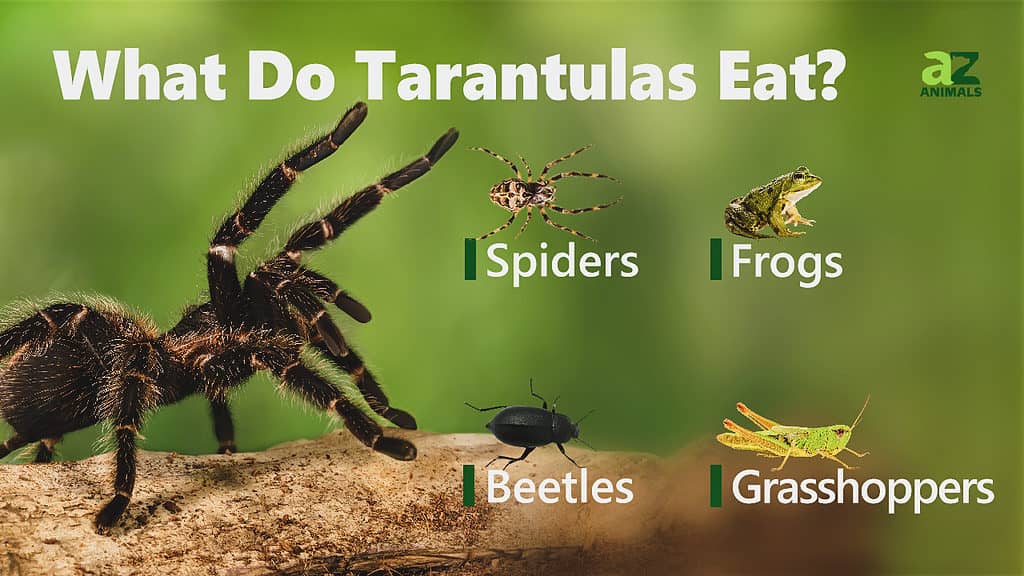
These spiders eat crickets, grasshoppers, rodents, small lizards, frogs, and roaches. They eat whatever animal is most abundant in their desert habitat. A baby tarantula eats the same type of prey, but smaller in size.
Normally, these spiders eat one or two times per week. A month or two before molting, these tarantulas usually stop eating. This is so they can focus on this stressful process. A tarantula molts many times throughout its long lifespan.
View all 114 animals that start with RRed Knee Tarantula FAQs (Frequently Asked Questions)
Tarantula vs Wolf Spider
Tarantulas are often compared to wolf spiders, as they’re two of the larger types of spiders. Tarantulas have longer hair compared to wolf spiders and are also larger. In addition, the eyes of wolf spiders are more apparent than tarantulas. Their eyes are often hidden beneath their hair.
Are Red Knee Tarantulas herbivores, carnivores, or omnivores?
Red Knee Tarantulas are Carnivores, meaning they eat other animals.
What Kingdom do Red Knee Tarantulas belong to?
Red Knee Tarantulas belong to the Kingdom Animalia.
What class do Red Knee Tarantulas belong to?
Red Knee Tarantulas belong to the class Arachnida.
What phylum to Red Knee Tarantulas belong to?
Red Knee Tarantulas belong to the phylum Arthropoda.
What family do Red Knee Tarantulas belong to?
Red Knee Tarantulas belong to the family Theraphosidae.
What order do Red Knee Tarantulas belong to?
Red Knee Tarantulas belong to the order Araneae.
What type of covering do Red Knee Tarantulas have?
Red Knee Tarantulas are covered in hair.
What genus do Red Knee Tarantulas belong to?
Red Knee Tarantulas belong to the genus Brachypelma.
In what type of habitat do Red Knee Tarantulas live?
Red Knee Tarantulas live in semi-desert and scrub land.
What is the main prey for Red Knee Tarantulas?
Red Knee Tarantulas prey on insects, small mammals, and reptiles.
What are some predators of Red Knee Tarantulas?
Predators of Red Knee Tarantulas include birds, reptiles, and mammals.
How many babies do Red Knee Tarantulas have?
The average number of babies a Red Knee Tarantula has is 40.
What is an interesting fact about Red Knee Tarantulas?
Red Knee Tarantulas inhabit the Pacific Mountains of Mexico!
What is the scientific name for the Red Knee Tarantula?
The scientific name for the Red Knee Tarantula is Brachypelma smithi.
What is the lifespan of a Red Knee Tarantula?
Red Knee Tarantulas can live for 20 to 30 years.
How fast is a Red Knee Tarantula?
A Red Knee Tarantula can travel at speeds of up to 18 miles per hour.
Are red knee tarantulas dangerous?
Yes and no. Yes, they are dangerous to an insect or rodent that wanders into their habitat. Getting too close to this spider’s burrow is likely to cost the insect its life.
No, they aren’t dangerous to humans or someone who has one as a pet. Though they have venom, it isn’t powerful enough to hurt a person. Furthermore, this spider is known for its gentle temperament, so it isn’t likely to bite someone unless it feels threatened.
How many legs does a red knee tarantula have?
This tarantula has eight legs.
How do you identify red knee tarantulas?
These tarantulas get their name from their coloration. They have dark brown hairs all over their body as well as bright red or orange hair on each of their knee joints.
Are red knee tarantulas poisonous?
Yes. They have a venomous bite, but it’s only poisonous to their small prey. The bite of this spider has been compared to a bee sting. Of course, a pet red knee tarantula is more likely to hide than bite its owner.
Are Mexican red knee tarantulas friendly?
These spiders are known for their shy, docile temperament. So, the owner of a pet red knee tarantula has to spend time handling it in a safe, gentle way in order to earn the spider’s trust. An owner who provides a good home for this tarantula including a habitat with the proper temperature and humidity as well as the right type of diet is likely to have an agreeable pet.
What do red knee tarantulas eat?
These spiders eat crickets, grasshoppers, lizards, rodents, roaches, beetles, and frogs.
A pet red knee tarantula may eat live crickets or grasshoppers. Someone with a pet tarantula can save on the cost of purchasing crickets and other food by maintaining a collection of live insects at home.
How big do red knee tarantulas get?
A red knee tarantula can grow to a size of 5 or 6 inches long. They weigh around 0.5 ounces.
Where can you buy a red knee tarantula?
These spiders are sold in some pet shops. Of course, the pet shop should keep this spider in the right environment with the proper temperature and level of humidity, so it remains healthy. They are also available from some online reptile sellers. The cost for this spider varies depending on where it’s being sold.
Keep in mind these spiders need extra special care to keep them healthy. For instance, the temperature of their habitat must be monitored. This tarantula needs a humidity level of 60 to 70 percent.
Another thing to remember is this spider can have a very long lifespan, so it needs a dedicated owner. Someone interested in a red knee tarantula is encouraged to do some research before getting this unique spider.
Do tarantulas eat snakes?
Yes, surprisingly. While the saying goes, the smaller the spider, the smaller the prey, recent studies have shown that even small spiders can catch snakes and feed on them.
Who would win a fight: Tarantula vs Scorpion?
The scorpion would win the fight against a tarantula.
When weighing the advantages of each species separately, the odds seem even in a fight between a scorpion and a tarantula. But when weighed together, the scorpion’s speed, tough exoskeleton, and deadly venom all point to a clear winner. Despite the tarantula’s size advantage, the scorpion is capable of a quick, deadly attack that makes it one of the most dangerous arachnids in the world.
Who would eat who: Tarantula vs Rattlesnake?
A tarantula would win the fight against a rattlesnake.
Even though the rattlesnake is bigger and faster, the tarantula’s hunting skills counterbalance the fact that it is slower than the rattlesnake. The tarantula’s hunting techniques are a clear advantage. It can quickly ambush the rattlesnake, biting it by the head. The rattlesnake, in turn, can’t do anything to escape.
Thank you for reading! Have some feedback for us? Contact the AZ Animals editorial team.
Sources
- Wikipedia, Available here: https://en.wikipedia.org/wiki/Tarantula
- Smithsonian's National Zoo & Conservation Biology Institute, Available here: https://nationalzoo.si.edu/animals/goliath-bird-eating-tarantula
- Arizona-Sonora Desert Museum, Available here: https://www.desertmuseum.org/kids/oz/long-fact-sheets/Pepsis%20Wasp.php
- Giant Spiders, Available here: https://www.giantspiders.com/captive-care/moulting/
- Maryland Zoo, Available here: https://www.marylandzoo.org/animal/mexican-redknee-tarantula/

